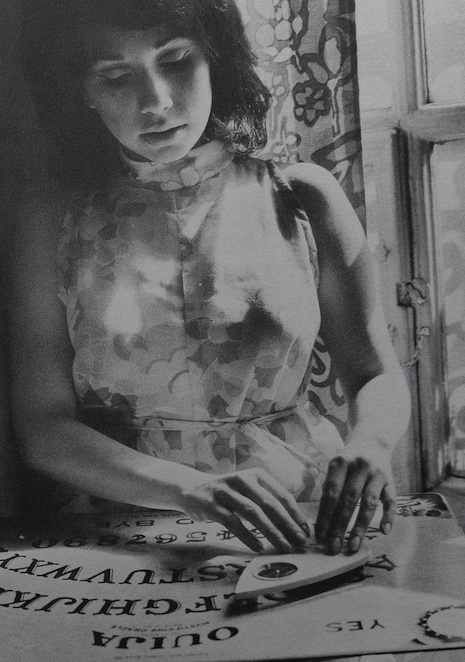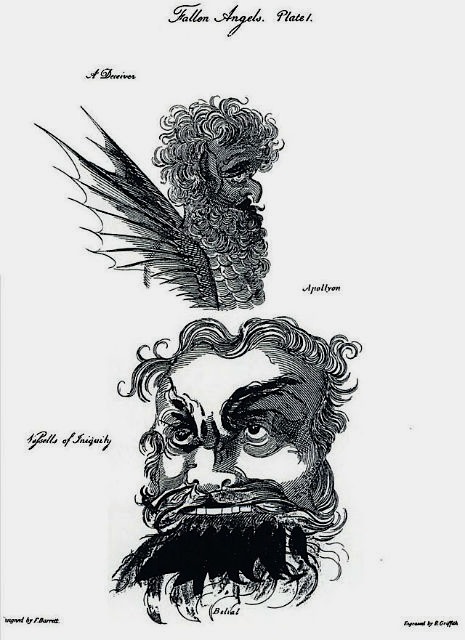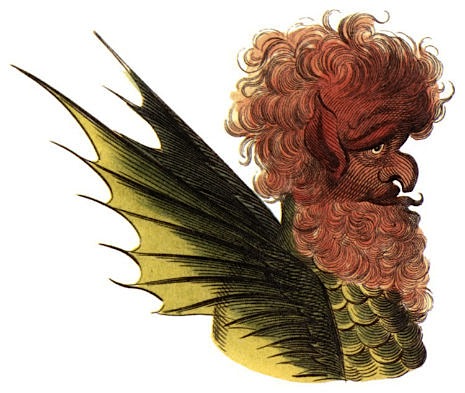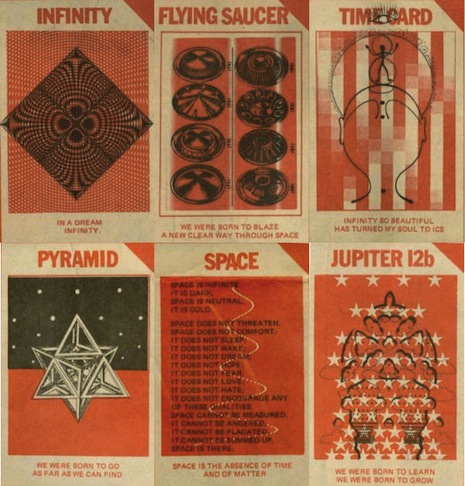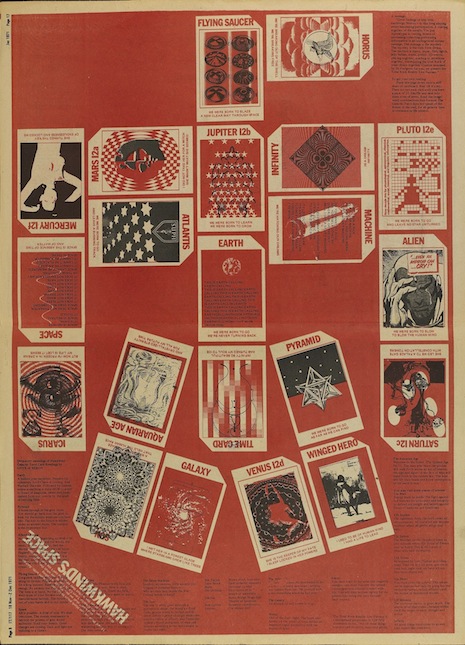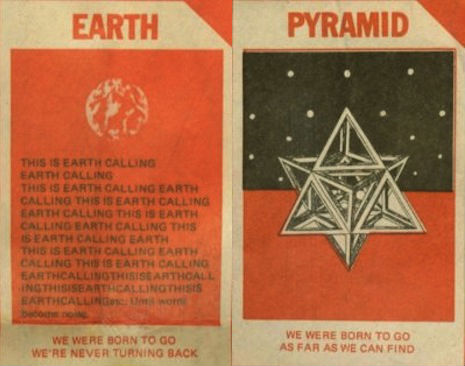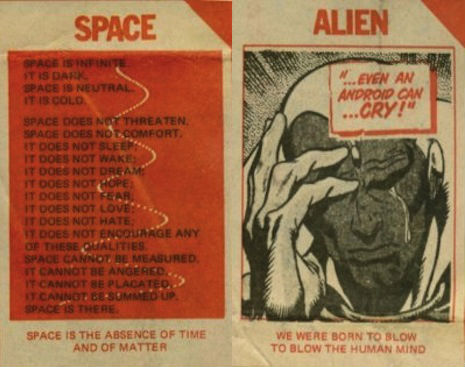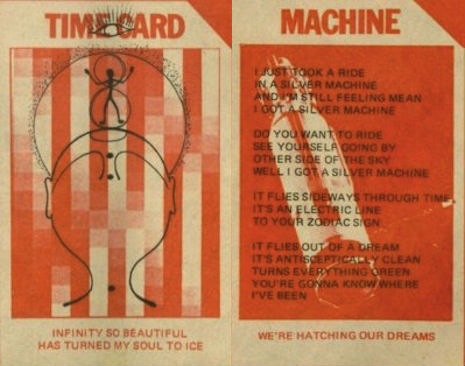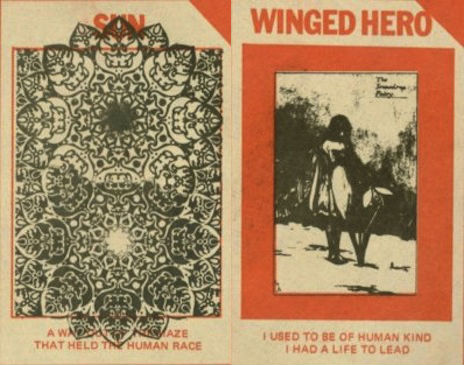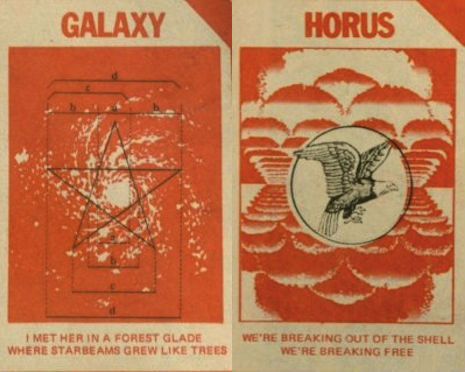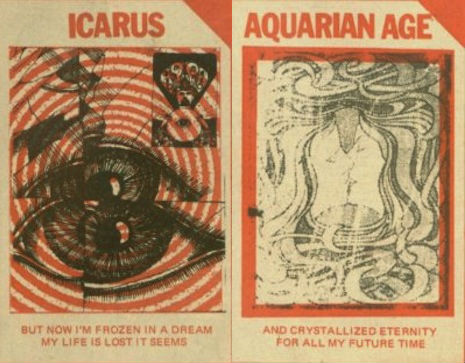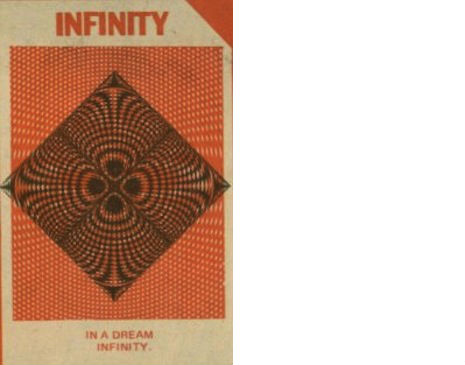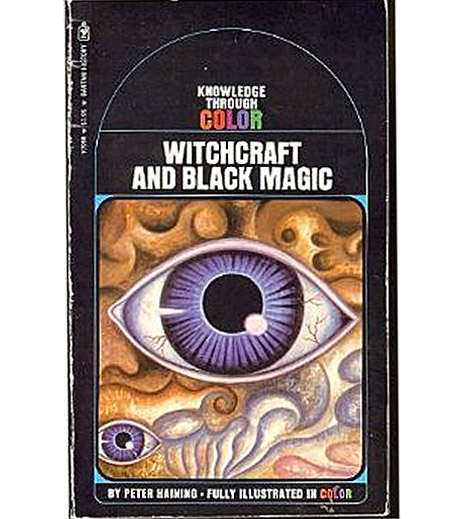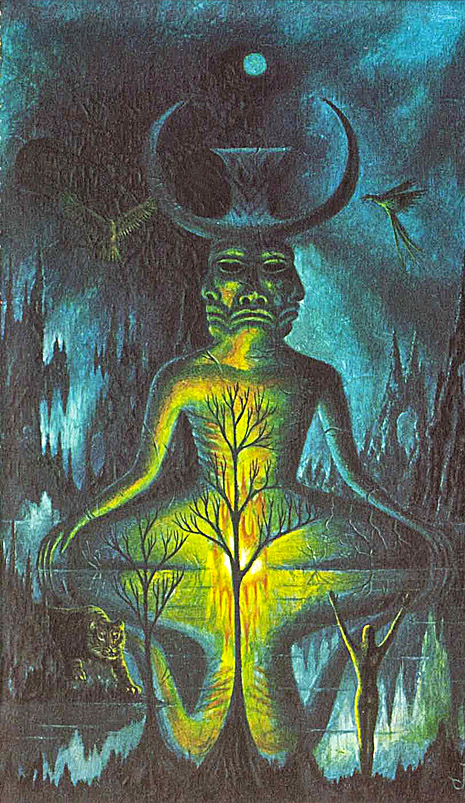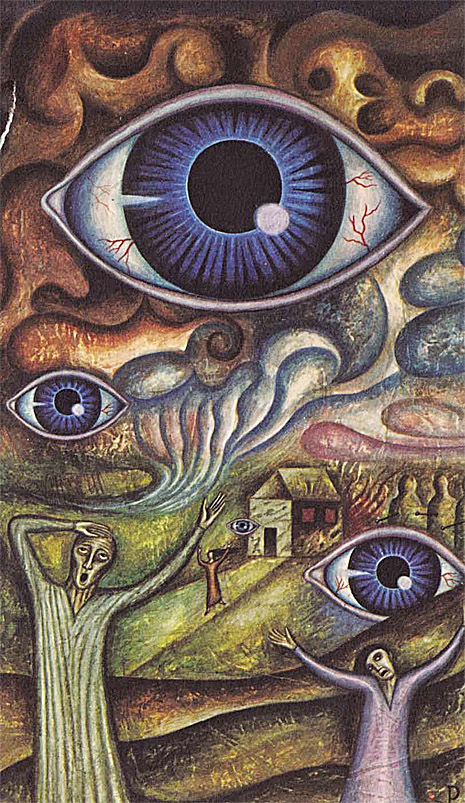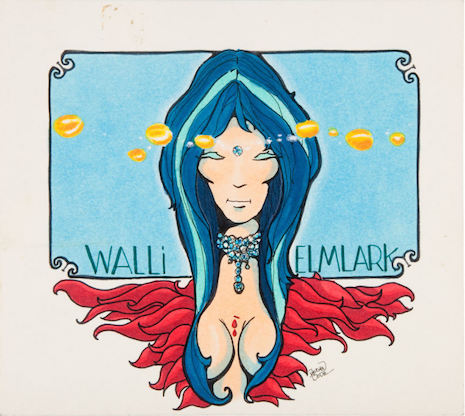
During the mid-1970s David Bowie entered his “Thin White Duke” phase, and this period has uniquely added to the Bowie mystique as well as become an object of special fascination to Bowie fans. (Among other things it produced my own favorite Bowie album, Station to Station.) It’s especially fascinating to us, I think, because Bowie seems to have lost track of himself a little bit in a way that was never true in any other period, in his phantastical ruminations about Nazis, Manson, cocaine, and his own bodily essences. Just a couple of weeks ago, DM featured a comic book about this period called “The Side Effects of the Cocaine,” the title of which comes from a line in Bowie’s song “Station to Station.”
When he arrived in 1975, Bowie was staying at the Los Feliz house of Glenn Hughes, bassist for Deep Purple, who lived just down the road from “the LaBianca house,” as Hughes recalls, being the site of one of the Manson murders in 1969, specifically the killing of Leno and Rosemary LaBianca two days after the murder of Sharon Tate and several other people in Benedict Canyon. As 1975 progressed and faded into 1976, Bowie would suffer from powerful forebodings right out of another connection to Roman Polanski, Rosemary’s Baby.
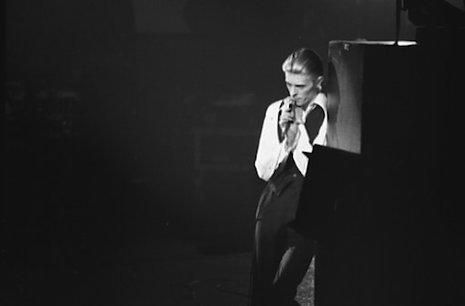
Bowie in his “Thin White Duke” phase, here during a 1976 concert in Toronto
The artistic and sensitive Bowie clearly perceived a malign influence from the Manson connection to Hughes’ home. He was using huge amounts of cocaine. According to Marc Spitz’s 2010 Bowie: A Biography, Bowie was “obsessed with using occult magic to attain success and protect himself from demonic forces.”
(A brief note on Spitz. Spitz is not a careful writer, and his book is riddled with annoying typos and mistaken facts. However, on the general subject of whether he is a reliable source, he does appear to have gotten his interviewees on the record. Peter Bebergal, author of the recent Season of the Witch: How the Occult Saved Rock and Roll, appears to regard him as a reliable source.)
According to Hughes, “David had a fear of heights and wouldn’t go into an elevator. ... He never used to go above the third floor. Ever. If I got him into an elevator, it was frightening. He was paranoid and so I became paranoid. We partied in private.” Bowie himself has stated the effect that the cocaine was having on his paranoia: “Cocaine severs any link you have with another human being. … Around late 1975 everything was starting to break up.”
Quoting Spitz again: “Bowie would sit in the house with a pile of high-quality cocaine atop the glass coffee table.” Bowie became obsessed with the book Psychic Self-Defense by Dion Fortune (Bebergal confirms this bit), which describes itself as a “safeguard for protecting yourself against paranormal malevolence.” Among other things, “Bowie began drawing protective pentagrams on every surface.”
As Hughes says, “He felt inclined to go on very bizarre tangents about Aleister Crowley or the Nazis or numerals a lot. … He was completely wired. Maniacally wired. I could not keep up with him. He was on the edge all the time of paranoia, and also going on about things I had no friggin’ idea of what he was talking about. He’d go into a rap on it and I wouldn’t know what he was talking about.” As Bowie himself remembered, “My other fascination was with the Nazis and their search for the Holy Grail. ... I paid with the worst manic depression of my life. … My psyche went through the roof, it just fractured into pieces. I was hallucinating twenty- four hours a day. ... I felt like I’d fallen into the bowels of the earth.”
At his wit’s end, Bowie reached out to Cherry Vanilla, a former employee of Bowie’s management company MainMan, who witnessed much of this paranoid, debauched phase. Cherry Vanilla verified the connection between Bowie and a “white witch”—racial connotations aside, and those are by no means absent from this story either, but the term is intended to distinguish witches whose effects are “good” and “evil”—who would purify his living premises. “He had this whole thing about these black girls who were trying to get him to impregnate them to make a devil baby,” says Vanilla. “He asked me to get him a white witch to take this curse off of him. He was serious, you know. And I actually knew somebody in New York who claimed she was a white witch. She was the only white witch I ever met. So I put him in touch with her. I don’t know what ever happened to her. And I don’t know if she removed the curse. I guess she did.”

This comic by Vaughn Bodē from July 1973 is one of the few surviving visual depictions of the self-professed “white witch” Walli Elmlark.
That “white witch” was one Walli Elmlark, who had taught some classes in magic at the New York School of Occult Arts and Sciences on Fourteenth Street in New York. She wrote a gossip column in the rock magazine Circus and had known Jimi Hendrix and was also friendly with Marc Bolan. A couple years earlier, Elmlark had recorded a spoken-word album with King Crimson’s Robert Fripp named The Cosmic Children; it has never been released. According to Sid Smith’s book In The Court Of King Crimson,
In June 1972, Fripp finished recording an album with a Wiccan journalist, called Walli Elmlark. The album was called The Cosmic Children. Side one consists of Fripp and Elmlark in conversation where she outlines her experiences and commitment to Wicca. On side two, she talks to DJ Jeff Dexter about cosmic children—spirits from other places who take physical forms such as Hendrix, Bolan, Bowie and Mike Gibbons, drummer with Badfinger. Talking to NME’s Simon Stable, Fripp stated: “The function of the album is to reach out to the children like the drummer from Badfinger, I want to say; ‘You’re not nutty, you’re not a freak because you can’t relate to what’s around you.’”
Elmlark had also published (per Spitz) “a cosmic paperback full of collages, poetry, personal confessions and observations,” which bore the title Rock Raps of the 70’s. It was co-written with occultist Timothy Green Beckley. According to that book, Elmlark was fond of wearing a “floor length clingy high necked long sleeved black jersey, and a floor length chiffon over dress that floats around me like a mysterious mist of motion.”

Summoned to Bowie’s residence, she quickly and apparently successfully exorcised the pool. This next bit is confirmed in Backstage Passes: Life on the Wild Side with David Bowie the memoir by Angie Bowie, David’s wife during this period who was also living there at the time: “At a certain point in the ritual, the pool began to bubble. It bubbled vigorously—perhaps ‘thrashed’ is a better term—in a manner inconsistent with any explanation involving filters and the like.” As Spitz wrote: “Elmlark wrote a series of spells and incantations out for Bowie, in case the demons return for a dip, and remained on call for Bowie as he continued to wrestle with the forces of darkness.”
Of all the people in this narrative, the one who knew Elmlark the best was Beckley, by far. Beckley was the director of the New York School of Occult Arts and Sciences where Elmlark taught and also co-wrote the Rock Raps book with her. In the Conspiracy Journal, issue #549, Beckley describes her as follows:
Wallie was known widely as the White Witch Of New York. Because of her contacts in the music industry, she had established quite an eclectic clientele for whom she would offer spiritual guidance, and occasional good luck or love spells, but always of a positive nature. She didn’t dabble in black magick or even gris gris (a New Orleans form of “gray magick” that incorporates poppets and the use of talismans kept in a personal mojo bag). Walli was lively, imaginative, energetic, well spoken, and quite attractive in her flowing white garments complete with fashionable silver moon adornments. Oh did I forget to mention long black hair, complete with dyed green streak highlights? Indeed, Walli made a very bold fashion and occult statement wherever she went.
There is surprisingly little about Walli on the Internet, for someone who “made a very bold fashion statement,” introduced Robert Fripp to the occult, and exorcised David Bowie’s house, you would think her name would be a staple in rock and roll lore—but it doesn’t appear to be the case. I couldn’t find a picture of her, aside from the Bodē cartoon above, and the main thing she is known for on the Internet is her authorship of the Rock Raps book. I was unable to find Walli’s obituary.
Spitz says that “Elmlark departed from this plane of existence in 1991.” Based on a few ramblings I saw on a message board I don’t take too seriously, it’s possible that she overdosed on barbiturates. Beckley, overly addicted to euphemism, says, “Several years went by and Walli met an untimely passing as she could not remove the demons in her own life, even though she had a dramatic impact on almost everyone she came in contact with,” before recounting a lot of incidents from the 1970s like the Fripp album and so on. His final words on Walli are, “Somehow I can’t exclude the fact that Walli looks down from time to time and perhaps sings along with David Bowie as he performs all over the world in concert.”
I don’t know about you, but after all that, I could stand to hear “Station to Station”:
Vaughn Bodē comic copyright Mark Bode 2015












